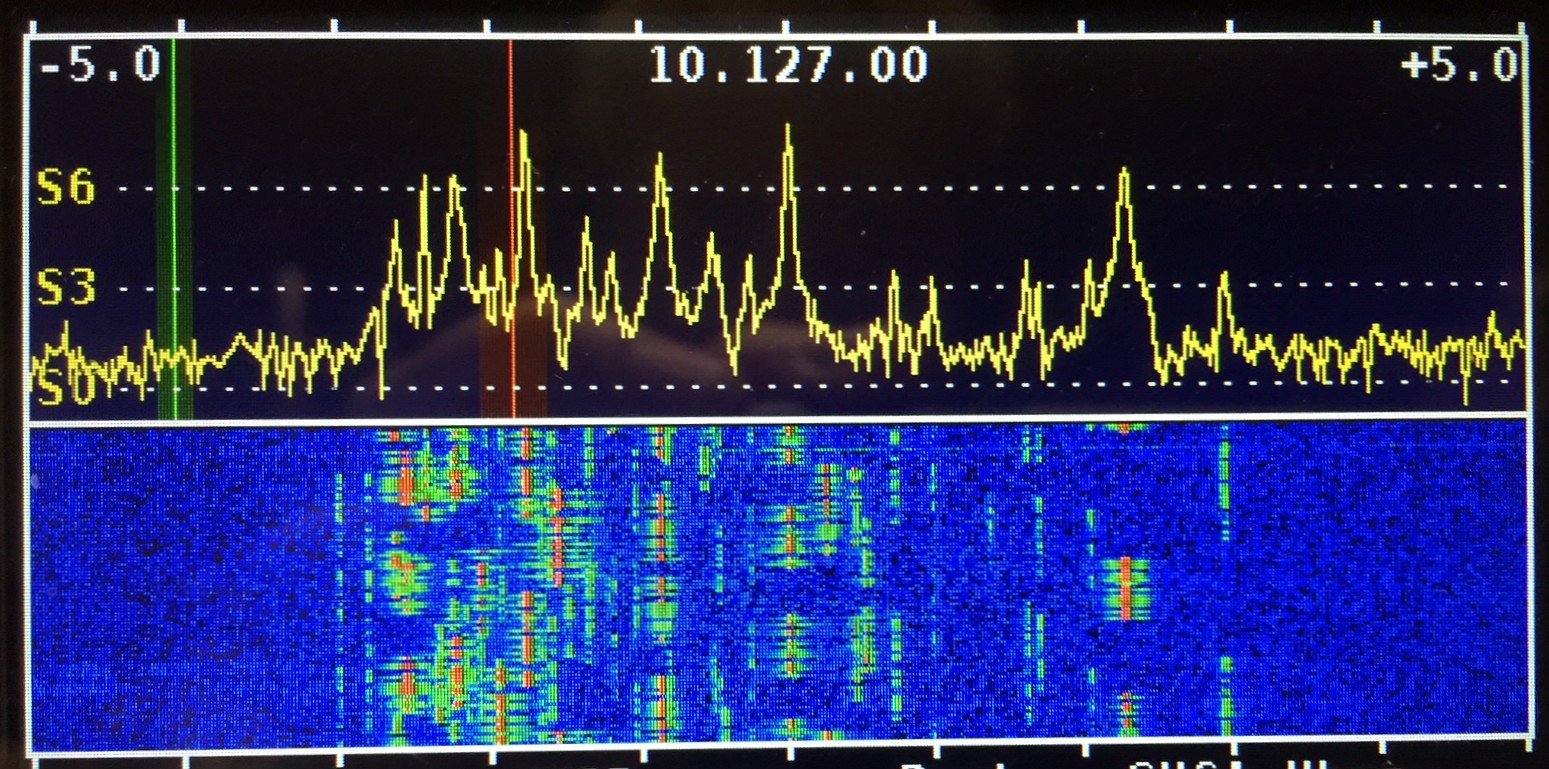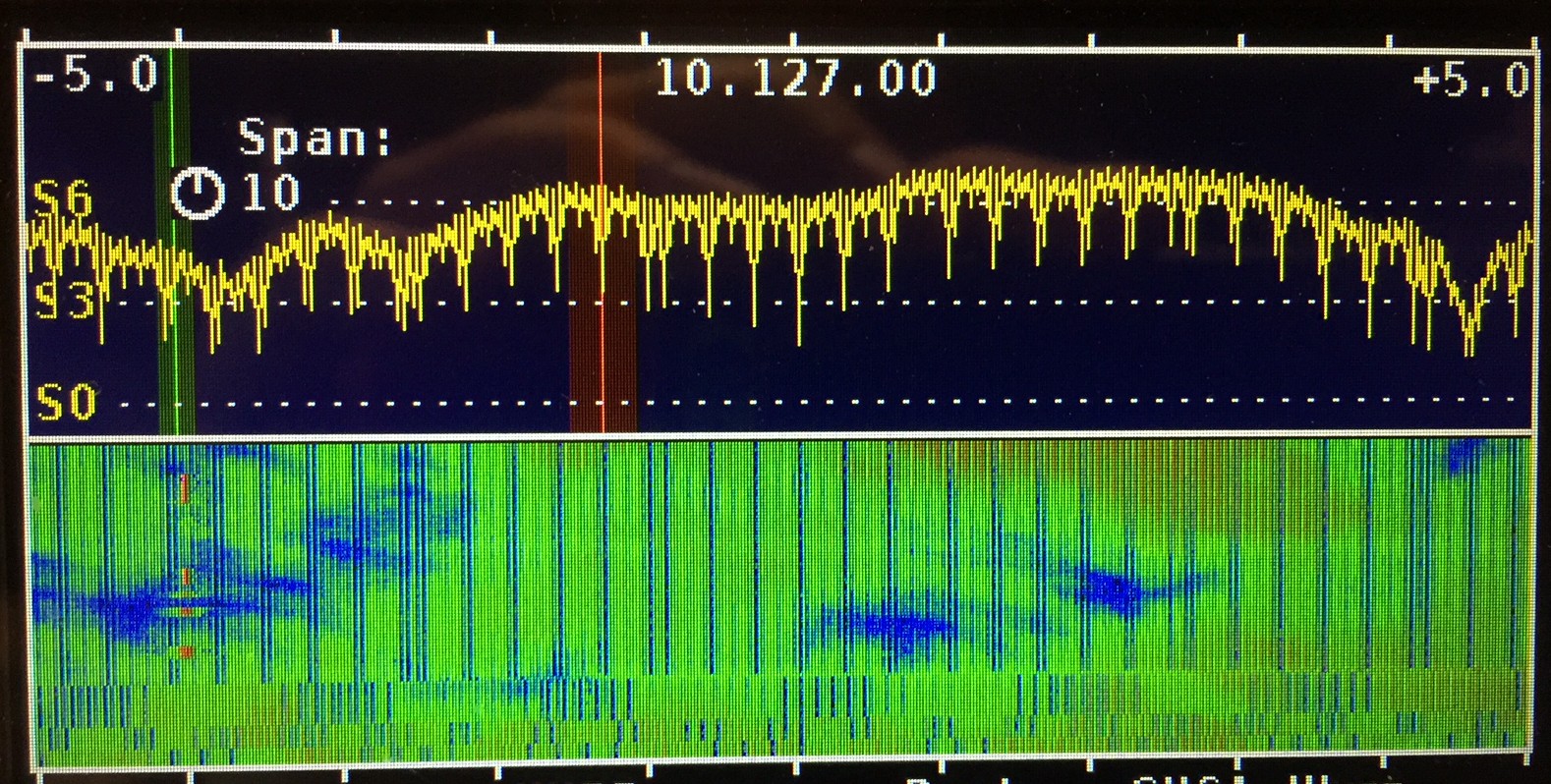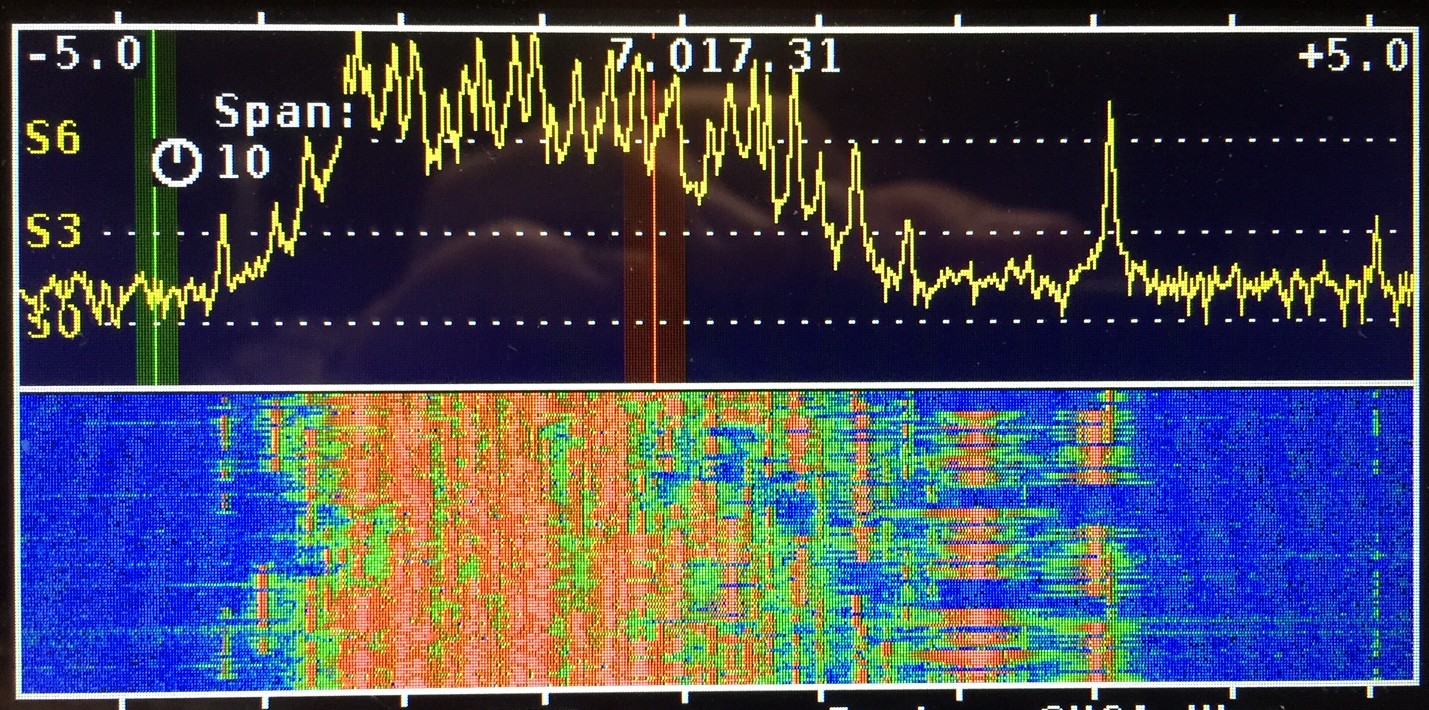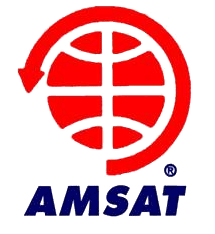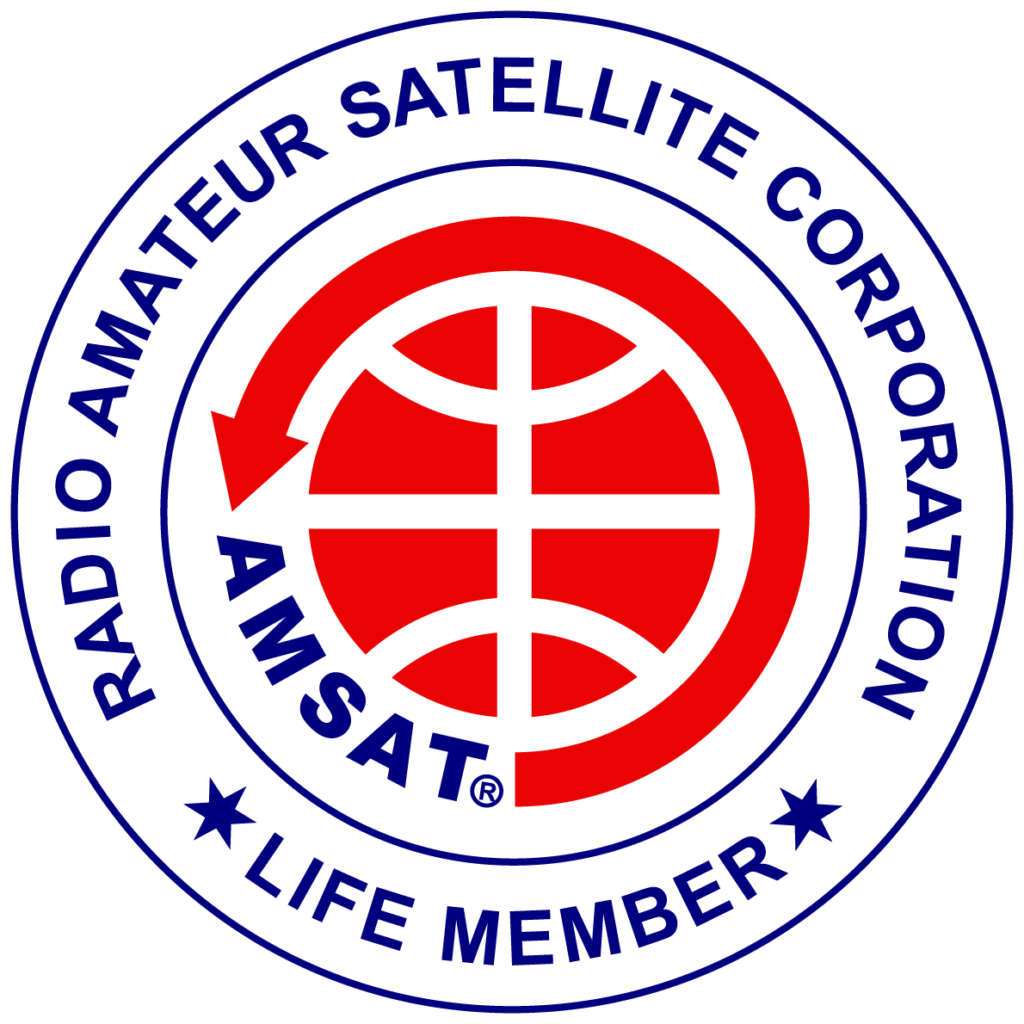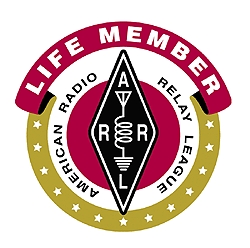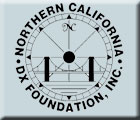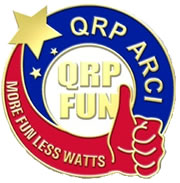I spent more than 3 hours listening to EP6T tonight (about 2300 to 0200Z) on 10.122.96 MHz. Below is a picture of my band scope that shows a typical response to a EP6T CQ — About 6 KHz of tightly packed responders and another 4 KHz of stranglers. Given 30 Meter propagation, I’m sure this is only a small fraction of what EP6T would see. EP6T is a good 3 S-units above the local noise level here in RI after dark on 30 Meters.
Unfortunately the QSO rate is VERY low, often only one contact per minute, never more than three, and sometimes zero per minute. I can imagine that this is either due to wall to wall signals that simply can’t be separated, or perhaps horrible local noise.
The bad news is with this QSO rate the pile won’t be reduced any time soon.
And as I typed this, some 40 KHz wide signal with S7 peaks fired up — its been on for the past 12 minutes. Reminds me of the old over-the-horizon radar. (signal has peaks every 100 Hz — looks like a sine wave except it is in the frequency domain). It went away as suddenly as it began at 0208Z.
I shifted to 40 Meter CW shortly after the noise appeared on 30. The signal level for Ep6T was about S6, a good 4-5 S-units above local noise, so even easier copy. But the pileup was just as large if not larger. They moved to SSB not long after.
Just for the record, not complaining, just observing, and spending far more time listening to understand the EP6T operator habits. Those pileups are mostly due to folks just blindly sending their call every 5 seconds over and over again.

